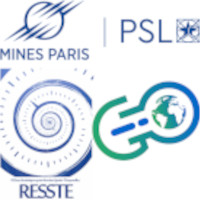Precipitation and temperature simulations derived from stochastic weather generators used in hydrology should replicate the dependence structure of observations in both space and time. In addition, key space-time statistics should be properly replicated for all the scales influenced by the response times and the hierarchical structure of the river network under study. Furthermore, precipitation and temperature statistics should be simulated together in order to capture their joint influence on the hydrological system of interest (e.g. slow line height, potential evapotranspiration).
The Simulation of Atmosphere over Basins to describe Climate (SimABC) framework has been designed to generate hydrologically relevant temperature and precipitation simulations over large river basins (about 105 km2), which are deemed being mostly driven by the variability of the atmosphere at monthly to daily time scales. SimABC relies on a multi-scale approach to replicate this variability. A meta-Gaussian vectorial autoregression is first used to jointly simulate monthly precipitation and temperature over a partition of sub-basins. Subsequently, a spatio-temporal disaggregation is applied to the previously simulated monthly averages in order to simulate daily values consistent with atmospheric events jointly hitting several sub-basins
This poster exposes the structure of the stochastic weather generator SimABC, with an example over the Rhône river basin, and the perspectives of the approach.

 PDF version
PDF version
